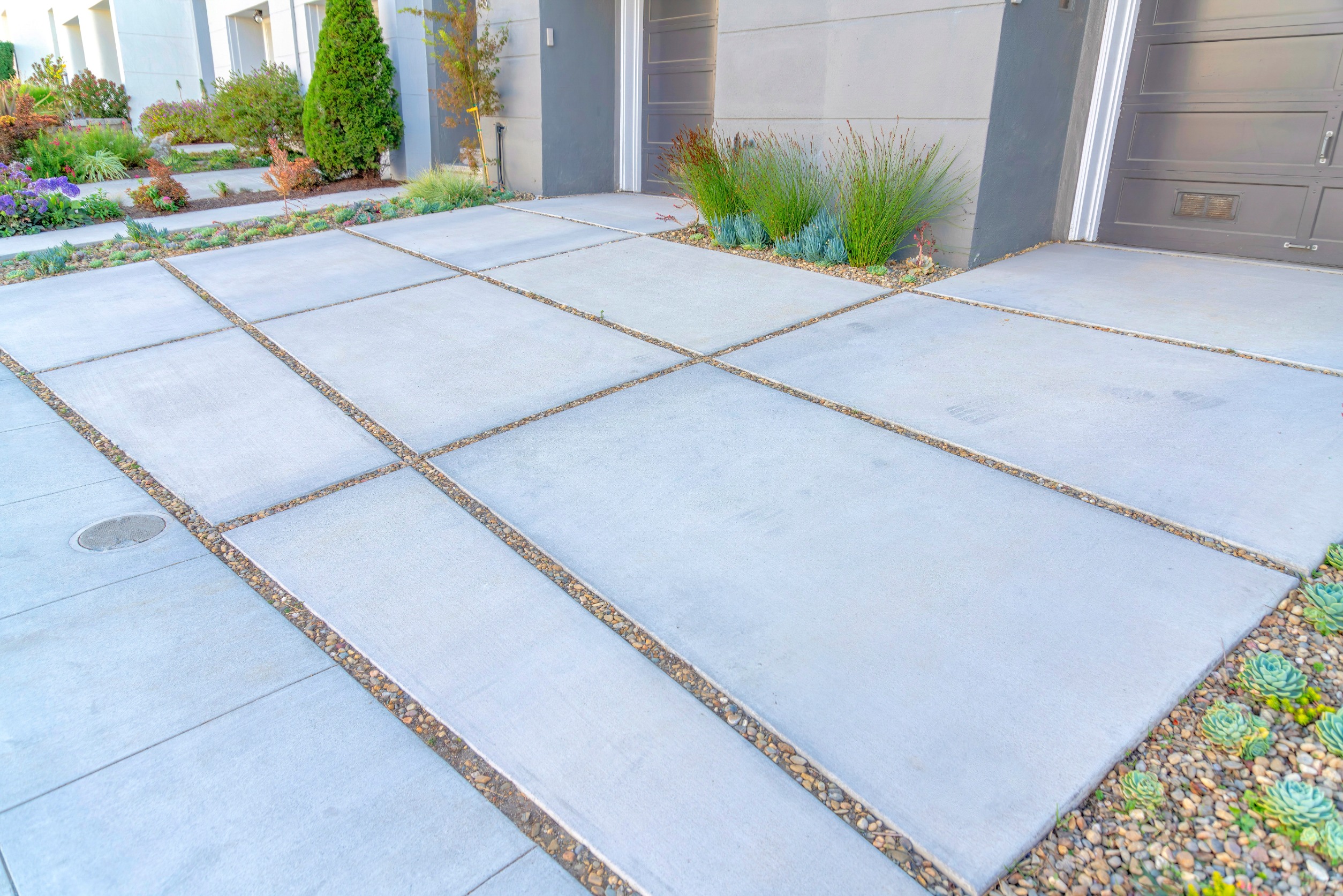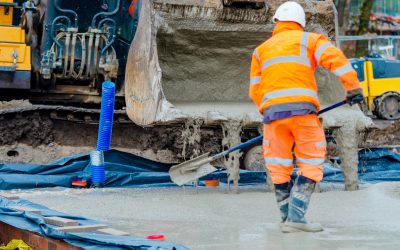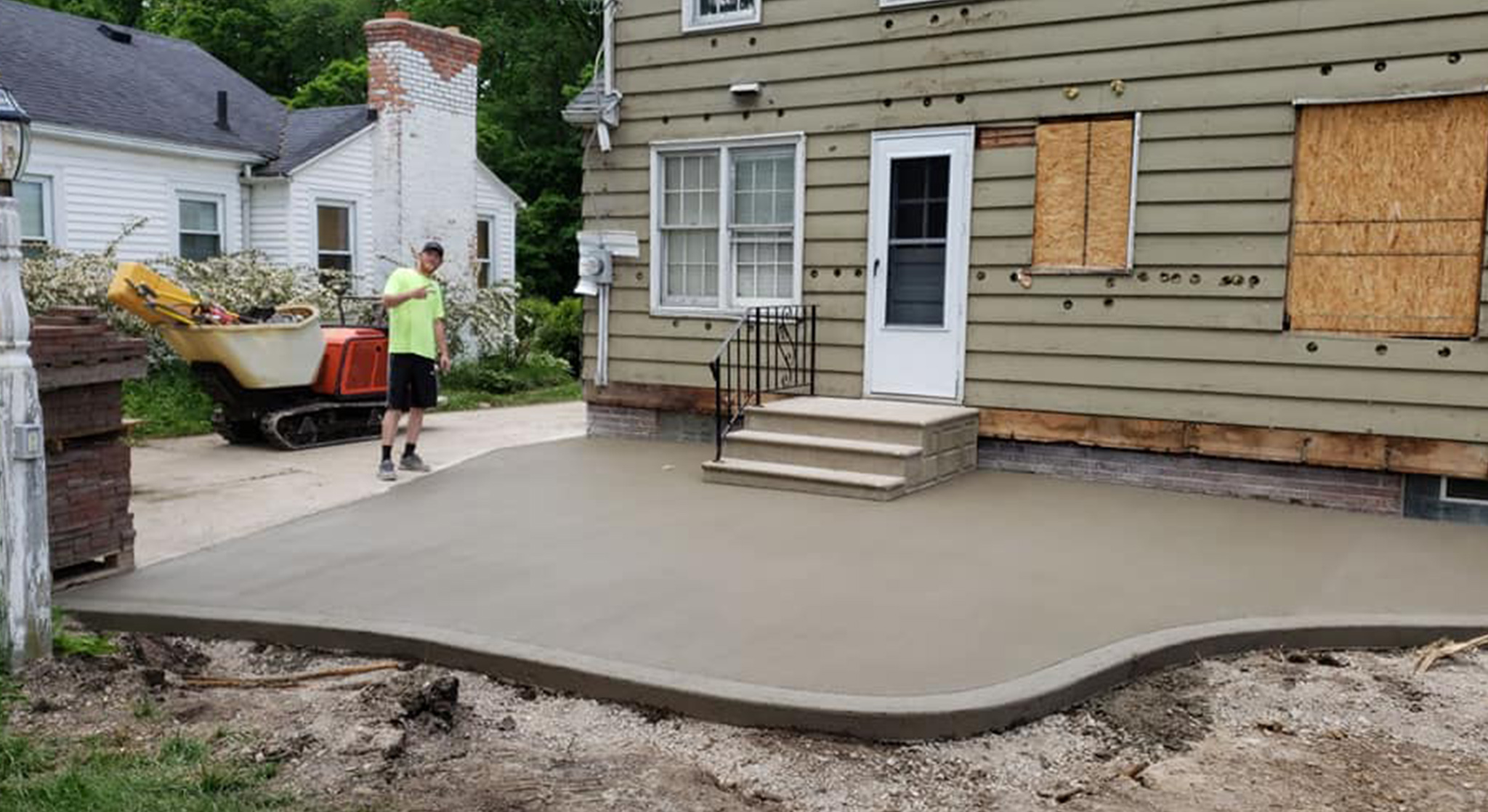In this comprehensive guide, we’ll cover the top five rules for maintaining your concrete driveway, ensuring it looks great and lasts for years.
Whether you’re a homeowner in Perrysburg, Ohio, or elsewhere, these tips will help you preserve your investment.
Why Maintaining Your Concrete Driveway Matters
Your driveway is one of the first things people see when they visit your home. A well-maintained concrete driveway can significantly enhance your property’s curb appeal. Additionally, proper maintenance can extend the lifespan of your driveway, saving you money on costly repairs or replacements.
In Perrysburg, Ohio, where weather conditions can be harsh, maintaining your concrete driveway is even more critical to prevent damage from the elements.
The Basics of Concrete Driveway Care
Concrete driveways are known for their strength and durability, but they’re not entirely maintenance-free. Regular care can prevent common issues such as cracks, stains, and surface deterioration. By following a few simple steps, you can keep your driveway looking new and functional.
Rule 1: Clean Regularly to Prevent Stains
Why Regular Cleaning is Necessary
Regular cleaning is the first step in maintaining your concrete driveway. Dirt, debris, and spills can accumulate on the surface, leading to stains and discoloration. In areas like Perrysburg, Ohio, where road salt is commonly used during winter, cleaning your driveway becomes even more crucial.
How to Clean Your Concrete Driveway
To clean your driveway, start by sweeping away loose dirt and debris. Use a hose or pressure washer to remove any remaining particles.
For stubborn stains, such as oil or grease, apply a degreaser or a mixture of baking soda and water, scrub with a stiff brush, and rinse thoroughly. Regular cleaning helps maintain the appearance of your driveway and prevents damage from corrosive substances.
Frequency of Cleaning
How often should you clean your concrete driveway? Ideally, you should clean it at least twice a year, typically in spring and fall. However, if you notice any spills or stains, it’s best to address them immediately to prevent permanent discoloration.
Rule 2: Seal Your Driveway to Protect It
The Importance of Sealing
Sealing your concrete driveway is a crucial step in protecting it from the elements. A quality sealer acts as a barrier, preventing water, chemicals, and stains from penetrating the surface.
In Perrysburg, Ohio, where freeze-thaw cycles are common, sealing your driveway can help prevent cracks and surface damage.
Choosing the Right Sealer
There are various types of sealers available, including penetrating sealers and film-forming sealers. Penetrating sealers soak into the concrete, providing long-lasting protection without altering the appearance.
Film-forming sealers create a protective layer on the surface, which can enhance the driveway’s appearance but may require more frequent reapplication. Choose a sealer that suits your needs and climate conditions.
How to Apply Sealer
Before applying a sealer, ensure your driveway is clean and dry. Follow the manufacturer’s instructions for the best results. Typically, you’ll need to apply the sealer using a roller or sprayer, ensuring even coverage.
Allow the sealer to dry completely before using the driveway. Reapply the sealer every two to three years, or as recommended by the manufacturer, to maintain optimal protection.
Rule 3: Address Cracks and Repairs Promptly
Identifying Common Issues
Cracks and surface damage are common issues with concrete driveways, especially in regions with freeze-thaw cycles like Perrysburg, Ohio. It’s essential to address these problems promptly to prevent them from worsening.
How to Repair Cracks
For small cracks, use a concrete crack filler or patching compound. Clean the crack thoroughly, remove any loose debris, and apply the filler according to the manufacturer’s instructions.
For larger cracks or significant surface damage, you may need to consult a professional for more extensive repairs.
Preventing Future Cracks
To prevent future cracks, ensure your driveway is properly sealed and avoid using de-icing chemicals that can damage the concrete. Additionally, keep heavy vehicles off the driveway, as excessive weight can cause cracks and deterioration over time.
Rule 4: Avoid Heavy Loads and Sharp Objects
Impact of Heavy Loads
Concrete driveways are strong, but they’re not invincible. Heavy vehicles, such as RVs or large trucks, can cause stress on the surface, leading to cracks and structural damage. To protect your driveway, avoid parking heavy vehicles on it for extended periods.
Risks of Sharp Objects
Sharp objects, such as snowplow blades or metal shovels, can scratch and damage the surface of your concrete driveway. Use plastic or rubber-tipped tools when clearing snow or debris to prevent scratches and maintain the smooth finish of your driveway.
Proper Weight Distribution
If you must park heavy equipment or vehicles on your driveway, consider using plywood or boards to distribute the weight evenly. This simple step can help prevent localized stress and reduce the risk of cracks or damage.
Rule 5: Manage Water Drainage Effectively
Importance of Proper Drainage
Water is one of the primary culprits behind concrete driveway damage. Improper drainage can lead to water pooling on the surface, seeping into cracks, and causing erosion or freeze-thaw damage. Ensuring proper water drainage is crucial for maintaining your driveway’s integrity.
Installing Drainage Solutions
Installing drainage solutions, such as French drains or permeable pavers, can help manage water runoff and prevent pooling. Ensure that your driveway has a slight slope to direct water away from the surface and into appropriate drainage areas.
Regular Maintenance of Drainage Systems
If you already have a drainage system in place, regular maintenance is essential to keep it functioning correctly. Clear debris from drains and gutters, and inspect them periodically to ensure they’re not clogged or damaged. Effective water management will prolong the life of your concrete driveway.
Ready to Elevate Your Driveway’s Durability?
Maintaining your concrete driveway doesn’t have to be a daunting task. By following these five essential rules, you can keep your driveway looking great and lasting for years.
Ready to enhance your driveway? Schedule a professional consultation with Strayer Concrete today. Our stamped concrete services add lasting beauty and durability to your property. With expert care, your driveway will stay strong and stylish for years. We’re here to help you make the right choice.




